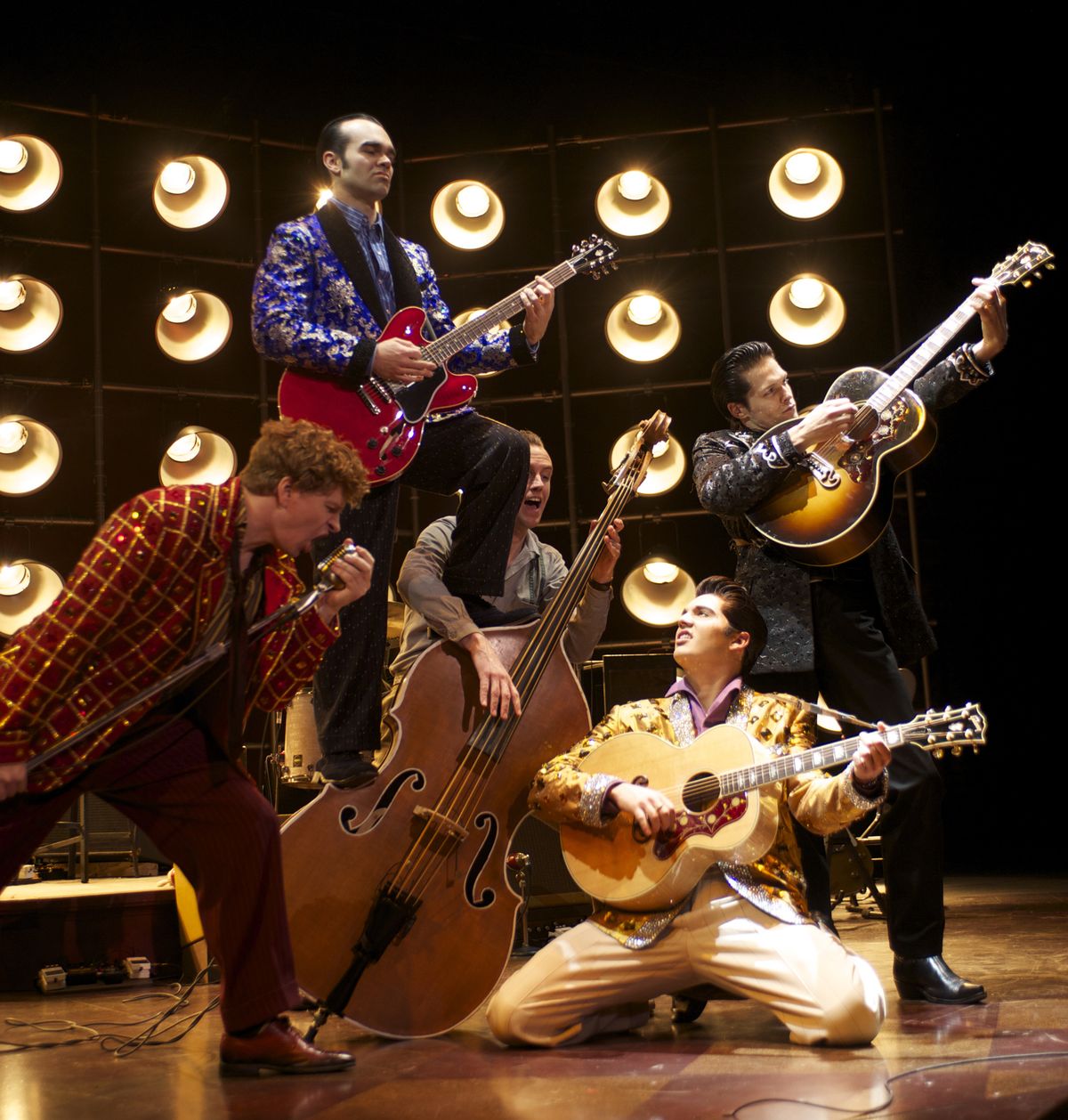Million dollar moment
Musical recalls the day when rock ’n’ roll got all shook up by a now-legendary unplanned recording session

When they started goofing off around a piano at Memphis’ famed Sun Studios on Dec. 4, 1956, Elvis Presley, Johnny Cash, Jerry Lee Lewis and Carl Perkins had no idea their impromptu jam session would become a significant piece of rock ’n’ roll history.
Later billed as the Million Dollar Quartet, the four musicians were visiting the studios for different reasons – Perkins was recording new material with Lewis on piano, and both Cash and Presley were just dropping by – but ended up convening to play for a couple of hours. Recordings of the session existed as bootlegs for years before being officially released in the early ’90s, and a jukebox musical that fictionalizes that afternoon in ’56, also called “Million Dollar Quartet,” first premiered onstage in 2006.
The show dramatizes the events that brought the legendary musicians together, and its soundtrack includes all of its subjects’ greatest hits – Perkins’ “Blue Suede Shoes” (which Presley also recorded), Cash’s “Folsom Prison Blues,” Presley’s “Hound Dog” and Lewis’ “Great Balls of Fire” – as well as a number of rock and country staples like “Riders in the Sky,” “Long Tall Sally” and “Brown Eyed Handsome Man.”
“Million Dollar Quartet,” which opens Thursday as a part of Spokane’s Best of Broadway series, is an energetic, polished affair. The songs, performed live, are slick and lively, the actors look and sound like the musicians they’re portraying, and they duplicate the artists’ most defining performance characteristics, from Lewis’ piano acrobatics to Elvis’ gyrating hips.
But the recordings that inspired the show are another thing entirely, a fly-on-the-wall document of great musicians in their natural habitat. They fumble their way through some gospel and country standards (“Peace in the Valley,” “Farther Along,” “Just a Little Talk with Jesus”), occasionally taking requests from other people in the studio, before Lewis takes over the controls entirely and plays several songs, including his cover of Ray Price’s “Crazy Arms,” by himself.
We also hear the chatter and banter in between songs, laughing and joking and improvisation. At one point, after a stripped-down performance of his hit single “Don’t Be Cruel,” Presley recalls having seen R&B singer Jackie Wilson cover the song, and he plays the song again imitating Wilson’s vocal inflections.
What’s most fascinating about “Million Dollar Quartet,” both the original recordings and the musical production, is how it simultaneously captures four celebrated careers at very different stages.
Lewis had only just signed to the Sun Records label and was relatively unknown at the time (his first hit single, “Whole Lotta Shakin’ Goin’ On,” was released the following year), whereas Presley, Perkins and Cash had all had recent No. 1 hits and were rising in popularity. But Presley, who essentially directs the Quartet sessions, was unquestionably the biggest star of the group, having stirred up controversy (and more than 60 million viewers) two months prior with his raucous performance on “The Ed Sullivan Show.”
Yet here he is, returning to his humble beginnings (Presley’s career started at Sun, but he had been acquired by RCA at the time of these recordings) and messing about in a small Memphis studio. “Million Dollar Quartet” offers a rare glimpse back at a time when none of these men were legends, and it not only celebrates a bygone era of music but makes it accessible to a new generation of listeners.